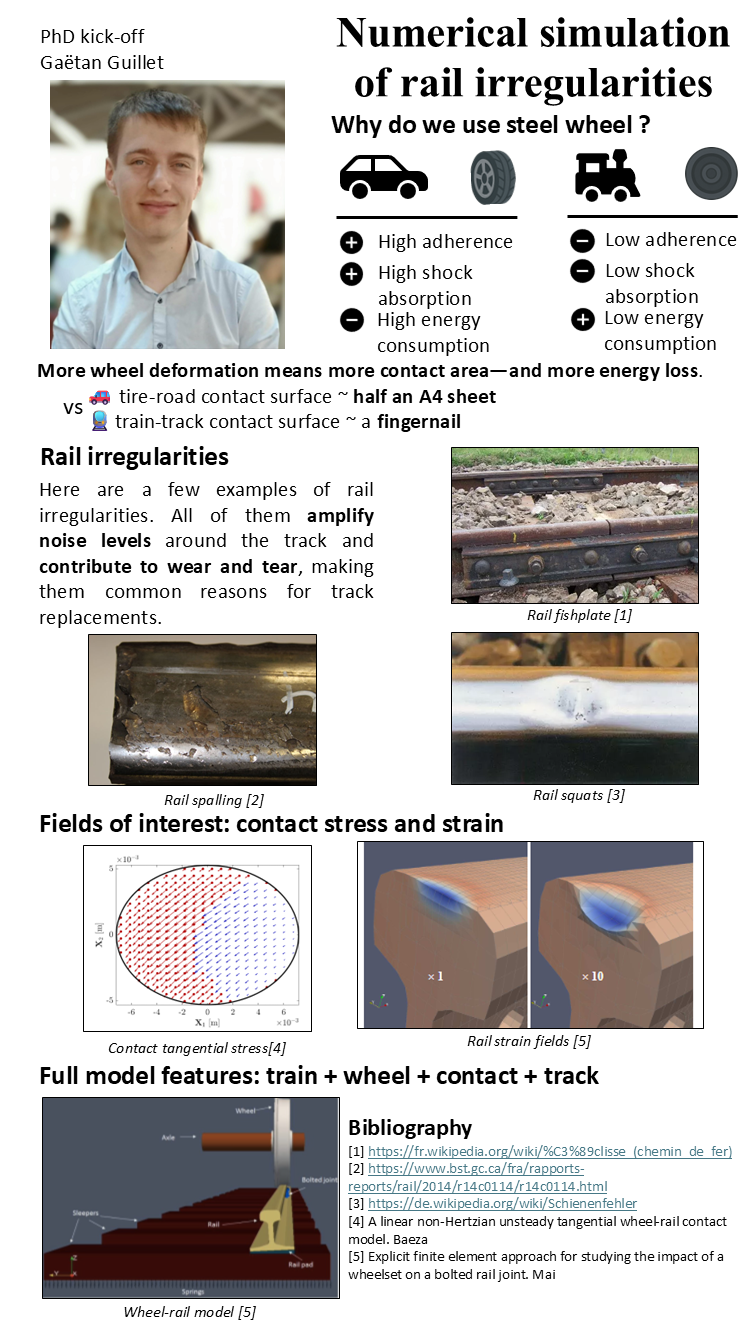We are happy to welcome Gaëtan Guillet to our research team!
He’s joining Groupe SNCF for the next three years to carry out his PhD 🎓, under the scientific direction of Etienne Balmes (SDTools) and Olivier Chiello (UMRAE) and the industrial supervision of Olivier VO VAN (Groupe SNCF).
Take a look below for a brief industrial overview of his thesis topic 👇
🚆 Trains are a widely adopted mode of transportation—and for good reason. Their high efficiency is largely due to the rigid contact between steel wheels and rails. This rigidity minimizes energy losses due to rolling resistance and wheel deformation. However, the same design that improves energy efficiency also requires the rail surface to be smooth and continuous, as it lacks the ability to absorb shocks effectively.
🛠️In real-world conditions, however, rail surfaces are not perfectly smooth. Irregularities may stem from:
– The architecture of the track (e.g., joints, fishplates, switches)
– Wear and fatigue defects (such as spalling or corrugation).
⚠️When wheels roll over these imperfections, shocks are generated, leading to several significant issues:
🔊 Noise pollution: the resulting impacts produce noise, raising concerns for people living near railway lines.
🔧 Infrastructure degradation: approximately 70% of rail replacements are attributed to fatigue or wear in the wheel-rail contact zone.
🎯 It is thus crucial for SNCF to better understand these issues. To avoid expensive and time-consuming experimental campaigns, our approach is to simulate these phenomena using a finite element model (FEM) capable of accurately analyzing the mechanics of wheel-rail contact.. The model aims to compute:
– Contact pressure and tangential stresses
– Wheel and rail strain fields as a train passes over localized rail irregularities.
The model architecture will include:
🚄 A multibody dynamic model of the train
🛞 A FEM of the wheel
🛤️A FEM of the track, compatible with acoustic analysis
🔬 A local wheel-rail contact model
🧠 The key issue lies in integrating a detailed local contact model that enables acoustic analysis, while keeping computation time reasonable.

